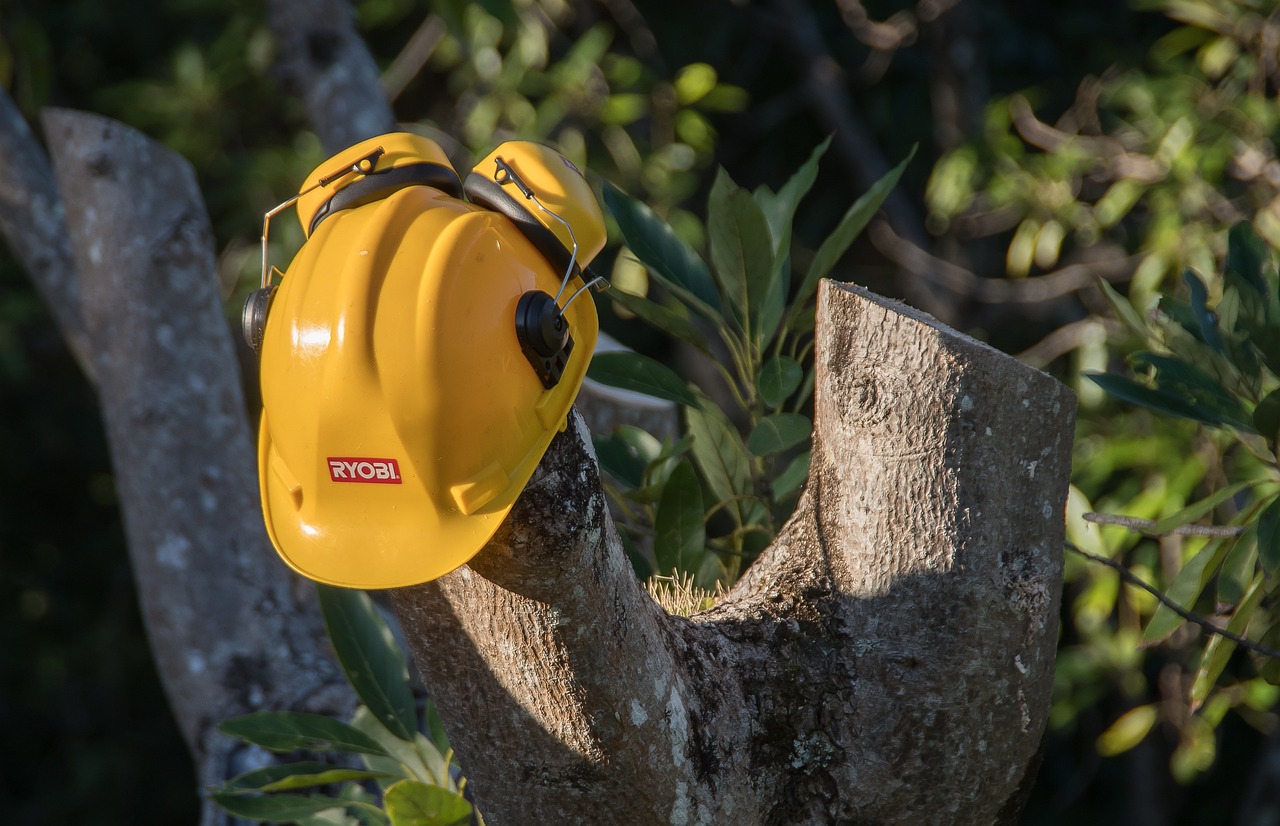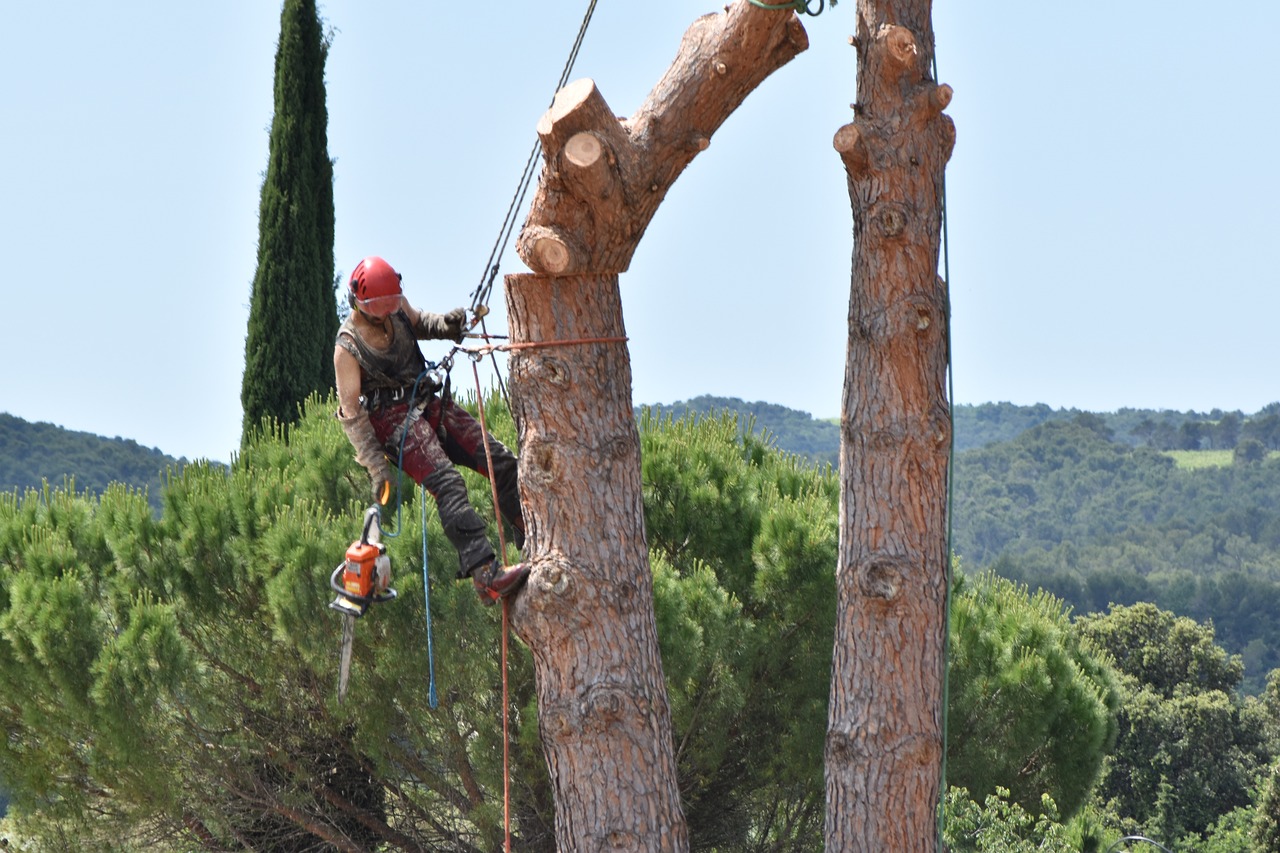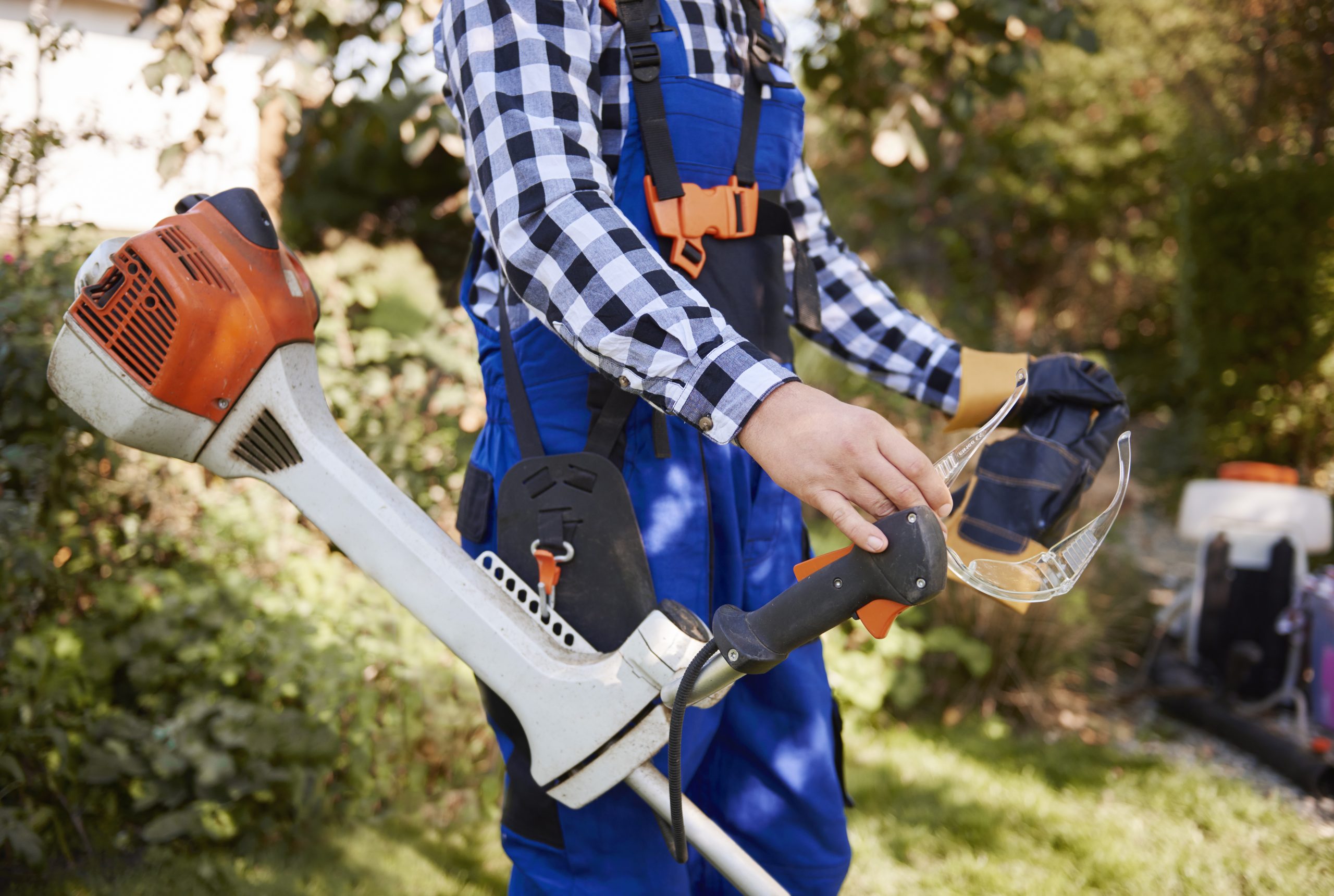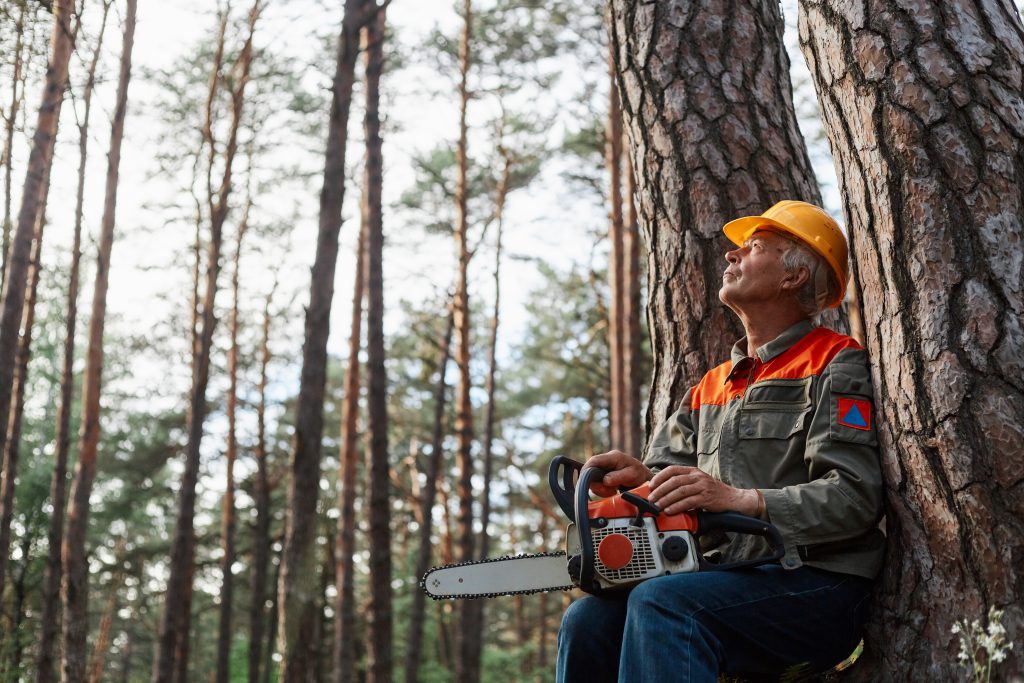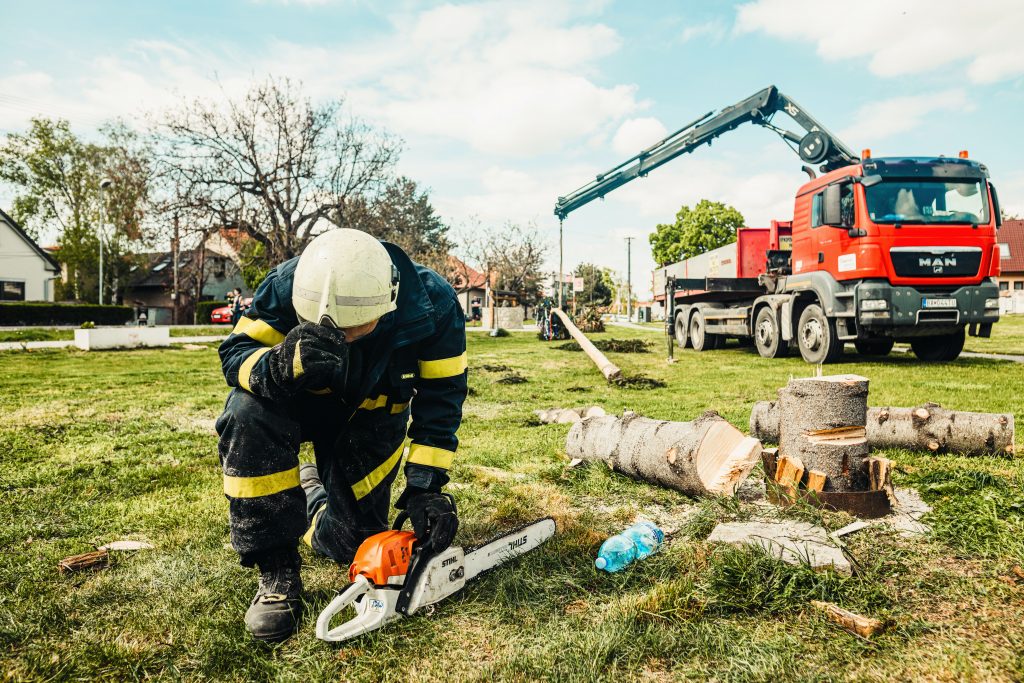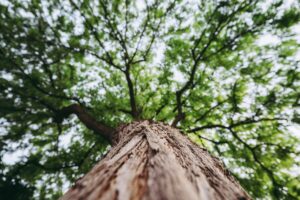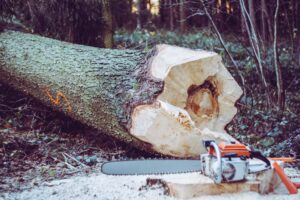How to Choose a Tree Removal Service?
How to Choose a Tree Removal Service?
So, you’ve got a tree that needs to go, huh? Well, fear not, because choosing a tree removal service doesn’t have to be a daunting task. In fact, with a little know-how and some insider tips, you’ll be able to find the perfect team to take care of your arboreal woes. From checking their credentials to getting a detailed estimate, this article will walk you through the steps of finding a reliable tree removal service that won’t leave you stumped.
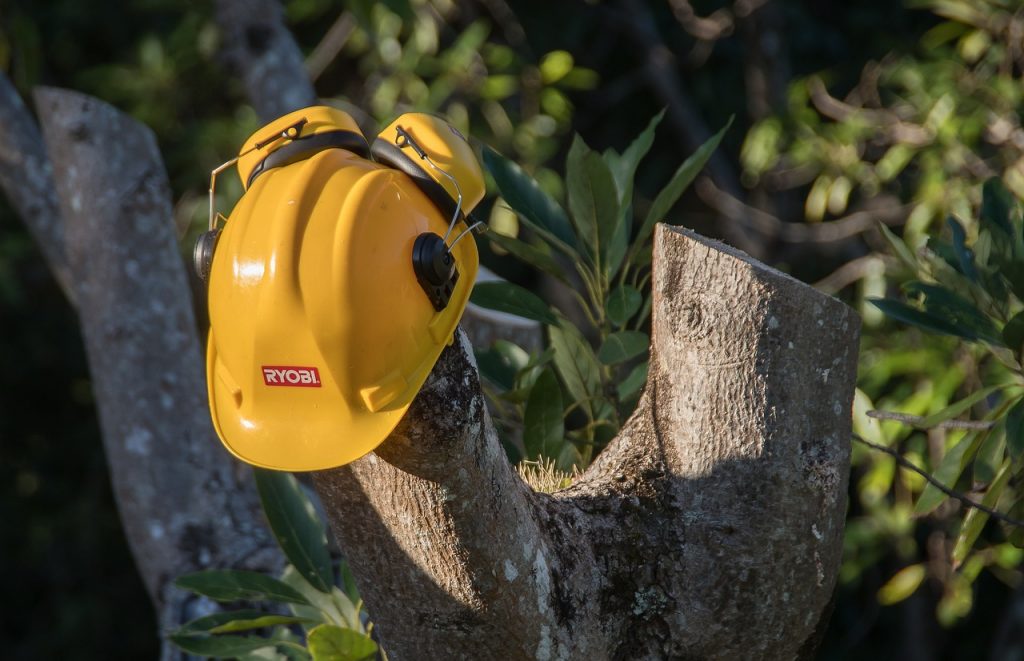
Key Takeaways
- Importance of choosing a tree removal service for professional help and expertise
- Factors to consider such as cost, safety guidelines, and licensing and insurance
- Tips for choosing a tree removal service including prioritizing safety and researching and comparing quotes
- Traits of a reliable tree removal service such as promptness, clear communication, positive testimonials, and reputation for professionalism
Introduction: Importance
Choosing a tree removal service is important because it ensures that you’re receiving professional help for a task that can be dangerous and complex. When it comes to tree removal, safety should always be the top priority. Here are three reasons why choosing the right tree removal service is crucial:
- Expertise: A professional tree removal service has the knowledge and experience to handle any tree removal job safely and efficiently. They are trained to assess the situation, determine the best course of action, and use the proper equipment to remove the tree without causing damage to your property or endangering anyone’s safety.
- Safety Precautions: Tree removal involves working with heavy equipment and dealing with potentially hazardous situations. A professional tree removal service follows strict safety protocols to minimize the risk of accidents. They have the necessary safety gear and know how to safely remove trees, even in challenging circumstances.
- Insurance Coverage: Hiring a licensed and insured tree removal service ensures that you are protected in case of any accidents or damages that may occur during the tree removal process. If an uninsured or inexperienced individual attempts to remove a tree and something goes wrong, you could be held liable for any injuries or damages that occur.
Tree Removal Service History
When it comes to finding the right company, you’ll want to consider the experience and reputation that tree removal services have built over the years. The history of tree removal services is important because it gives you an insight into the techniques and equipment they use to get the job done efficiently and safely.
Over the years, tree removal services have developed advanced techniques to ensure that trees are removed without causing any damage to surrounding structures or landscapes. These techniques include precision cutting, controlled felling, and the use of specialized equipment like cranes and chippers. By understanding the techniques used by a tree removal service, you can assess their expertise and ensure that they have the necessary skills to handle your specific project.
In addition to techniques, the equipment used by a tree removal service is crucial in determining their efficiency and safety. Modern tree removal companies invest in state-of-the-art equipment such as chainsaws, rigging systems, and stump grinders. This equipment not only enables them to complete the job quickly but also minimizes the risk of accidents and injuries.
Tips
When it comes to hiring a tree removal service, there are several key points to consider: cost, safety, licensing, and insurance. First and foremost, you should take into account the cost of the service and ensure that it aligns with your budget. Secondly, safety guidelines should be a top priority, as you want to ensure that the removal process is carried out without any accidents or damage. Lastly, it is crucial to check if the company has the necessary licensing and insurance in place, as this not only protects you but also ensures that the work is being done by professionals who are qualified and accountable.
Cost Considerations
If you’re looking to save some money, you should consider getting multiple quotes from different tree removal services. When it comes to tree removal, there are various service options available to you. It’s important to take the time to research and compare these options to find the best fit for your needs and budget. Start by contacting several reputable tree removal companies in your area. Request detailed quotes that outline the specific services they offer, such as tree cutting, stump removal, and debris cleanup. Take into account any additional charges or fees, such as permits or disposal costs. By gathering multiple quotes, you can compare prices and services to make an informed decision that fits within your budget. Once you have selected a tree removal service, it’s crucial to follow safety guidelines to ensure a smooth and secure process.
Safety Guidelines
To ensure a smooth and secure tree removal process, make sure you follow safety guidelines provided by the professionals. Tree removal techniques require careful consideration to prevent accidents and injuries. Before starting the process, it is important to wear appropriate safety gear, such as helmets, goggles, and gloves. Additionally, ensure that all equipment used for tree removal is in good condition and properly maintained. Inspect chainsaws, ropes, and harnesses to ensure they are functioning correctly. When operating machinery, be cautious of power lines and nearby structures. It is crucial to have a clear understanding of the correct cutting techniques to avoid any accidental damage. By adhering to these safety guidelines, you can ensure a safe and successful tree removal. Now, let’s move on to the next section about licensing and insurance.
Licensing and Insurance
Now that you are familiar with the safety guidelines for tree removal, let’s move on to another important aspect: licensing and insurance. When choosing a tree removal service, it is crucial to ensure that they have the necessary licenses and insurance coverage. Professional tree removal companies follow a specific tree removal process, and having the right licenses shows that they have met the required standards and regulations. Licensing requirements vary by state, so make sure to research what is necessary in your area. Additionally, reliable tree removal services carry adequate insurance to protect both you and their workers in case of any accidents or damages. By checking for proper licensing and insurance, you can have peace of mind knowing that you are working with a qualified and responsible tree removal service. Speaking of reliability, let’s now explore the traits of a reliable tree removal service.
Traits of a Reliable Tree Removal Service
One important trait of a reliable tree removal service is their promptness in responding to inquiries. When evaluating the reputation of a tree removal service, it is crucial to consider their responsiveness to customer inquiries. A reputable service will prioritize clear and timely communication with their clients. This can be assessed by checking customer testimonials and reviews online. Take the time to read through these testimonials to get a sense of the service’s reliability and level of customer satisfaction.
In addition to promptness in responding to inquiries, a reliable tree removal service should also possess a strong track record of customer satisfaction. Look for testimonials that highlight the service’s professionalism, efficiency, and the quality of their work. Positive reviews from past customers can give you confidence in the service’s ability to deliver a satisfactory experience.
Steps for Choosing a Tree Removal Service
When evaluating different tree removal companies, it’s important to research their qualifications and experience. Here are some steps and tips to help you choose the right tree removal service:
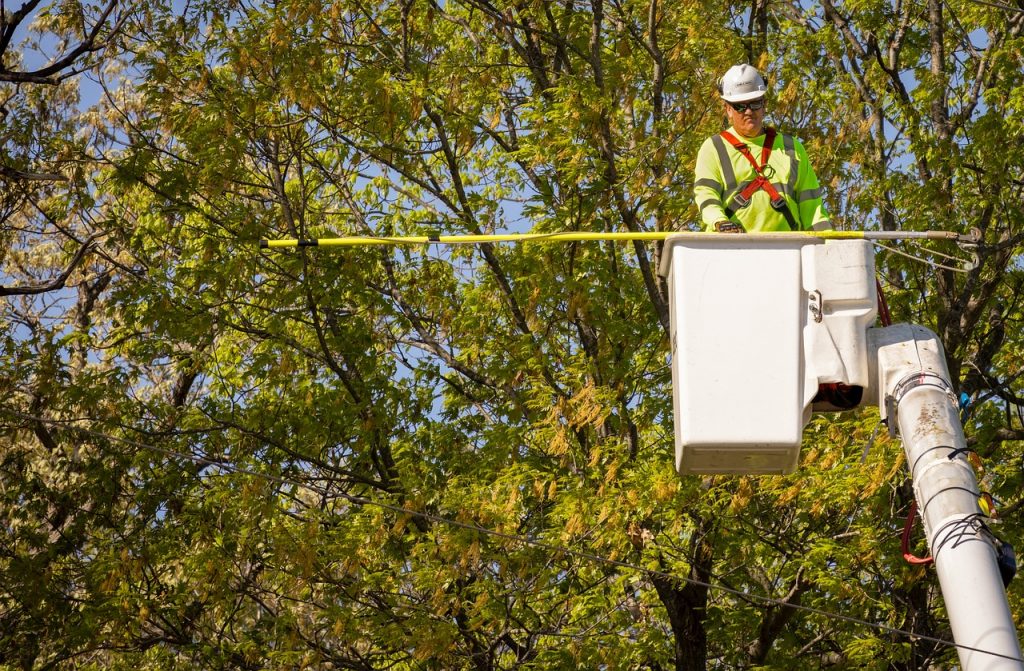
- Check for proper licensing and insurance: Ensure that the company has the necessary licenses and insurance coverage to protect you and your property in case of any accidents or damages.
- Ask for references: Request a list of references from the company and take the time to contact them. This will give you valuable insights into their past work and customer satisfaction.
- Get multiple quotes: Obtain quotes from at least three different tree removal companies. This will allow you to compare prices and services to ensure you are getting a fair deal.
- Inquire about equipment and safety measures: Find out what type of equipment the company uses and if they follow industry-standard safety protocols. This will ensure that the job is done efficiently and safely.
- Read reviews and testimonials: Look for online reviews and testimonials from previous customers. This will give you an idea of the company’s reputation and the quality of their work.
Goals
To effectively plan your tree removal project, it’s crucial to establish your goals. This will help you determine the scope of the project and ensure that the tree removal service you choose aligns with your expectations. Two important factors to consider when setting your goals are cost analysis and customer satisfaction. By conducting a cost analysis, you can evaluate your budget and determine how much you are willing to spend on the tree removal service. This will help you narrow down your options and choose a service that fits within your financial constraints. Additionally, considering customer satisfaction is essential to ensure that you hire a reputable and reliable service. You can research customer reviews and ratings to gauge the quality of service provided by different companies. A satisfied customer is a good indication of a well-performed job. By setting clear goals and considering cost analysis and customer satisfaction, you can make an informed decision when choosing a tree removal service. With this foundation in mind, let’s explore some habits for choosing the right service provider.
Habits for Choosing a Tree Removal Service
If you’re looking for a reliable tree removal company, evaluating their qualifications and experience is key. Developing good habits for evaluating and selecting tree removal services will ensure that you hire a company that is skilled, efficient, and trustworthy. When hiring a tree removal service, there are several important questions to ask. First, inquire about their qualifications and experience. How long have they been in business? Are they licensed and insured? It’s also important to ask about their team and equipment. Do they have certified arborists on staff? Do they have the necessary equipment to handle the job safely and effectively? Additionally, it’s crucial to inquire about their safety practices. Do they follow industry standards and guidelines? What precautions do they take to protect your property and ensure the safety of their workers? Lastly, don’t forget to ask for references and read reviews from previous customers. This will give you insight into the company’s reputation and the quality of their work. By following these habits and asking the right questions, you can confidently select a tree removal service that meets your needs.
A Real-Life Story
In this real-life story, you’ll discover how hiring a professional company to handle your tree removal needs can save you time, money, and headaches. Many people have had positive experiences with tree removal services, and their testimonials speak for themselves. One customer, John, had a large tree in his backyard that was causing damage to his property. He decided to hire a professional tree removal company after hearing about their expertise and efficiency. The company arrived promptly and assessed the situation, providing John with a detailed plan and cost estimate. They used the latest equipment and techniques to safely remove the tree without causing any further damage. John was amazed at how quickly and smoothly the process went. Not only did the professionals handle the job with precision, but they also cleaned up the debris and left his yard looking better than before. John’s experience is just one example of how hiring a professional tree removal company can make a significant difference in your life. Now, let’s move on to the next section – getting quotes from different companies.
Quotes
In our previous section, we delved into a real-life story of someone who faced the daunting task of choosing a tree removal service. Now, let’s move on to the next step in the process: obtaining quotes. This step is crucial as it allows you to gather information about the cost and services offered by different companies. By collecting multiple quotes, you can make an informed decision and find the best fit for your needs.
When requesting quotes, be sure to provide accurate details about the job. This will enable the companies to give you an accurate estimate. Additionally, ask for any additional insights they can provide. Experienced tree removal services often share valuable knowledge about the process, potential challenges, and any special considerations.
Comparing the quotes you receive will give you insights into hiring the right tree removal service for your specific requirements. Don’t just opt for the cheapest option, as quality and expertise are also important factors to consider.
Now that you have obtained quotes and gathered valuable insights, let’s move on to the next section where we uncover some secrets to ensure a successful tree removal experience.
Secrets
One of the secrets to a successful tree removal experience is to gather accurate details and insights when obtaining quotes from different companies. When it comes to tree removal, there are secrets revealed that can help you avoid hidden costs and ensure a smooth process.
First and foremost, it is essential to request detailed quotes from multiple tree removal companies. These quotes should include not only the cost of the actual tree removal but also any additional services that may be required, such as stump grinding or debris removal. By obtaining comprehensive quotes, you can compare the prices and services offered by different companies, allowing you to make an informed decision.
Another secret to a successful tree removal is to ask about any potential hidden costs. Some companies may charge extra fees for factors such as tree size, proximity to structures, or difficult access to the site. By addressing these potential hidden costs upfront, you can avoid any surprises when it comes time to pay the bill.
By understanding these secrets and gathering accurate details and insights when obtaining quotes, you can ensure a smooth and cost-effective tree removal experience.
Now that you know the secrets to obtaining accurate quotes and avoiding hidden costs, let’s move on to the next section where we will provide insights for choosing a tree removal service.
Insights for Choosing a Tree Removal Service
When it comes to choosing a tree removal service, there are a few insights that can help you make the right decision. First and foremost, consider cost-effective options. While it may be tempting to choose the cheapest service available, remember that quality often comes with a price. Look for companies that offer competitive pricing without compromising on the quality of their work.
Another important factor to consider is customer satisfaction. Take the time to read reviews and testimonials from previous customers. This will give you a good idea of the level of service you can expect. A reputable tree removal service will have a track record of satisfied customers who can vouch for their professionalism and expertise.
Benefits of Hiring a Tree Removal Service
To ensure you receive professional and efficient assistance, hiring a tree removal service offers numerous benefits for your specific needs and requirements. One of the main advantages is the expertise they bring to the table. Tree removal can be a complex and dangerous task, requiring specialized knowledge and equipment. By hiring professionals, you can rest assured that they have the necessary skills and experience to handle the job safely and effectively.
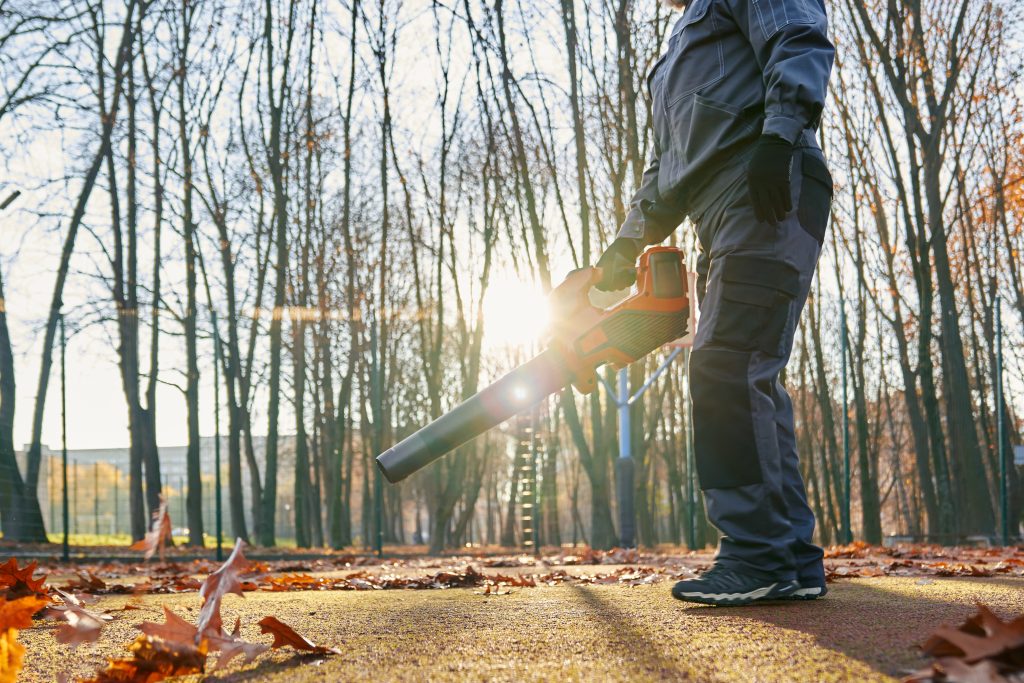
Another benefit is the time and effort you save. Removing a tree on your own can be a time-consuming and physically demanding process. With a tree removal service, you can free up your valuable time and avoid the hassle of doing it yourself. They will take care of all the necessary steps, from obtaining permits to cleaning up the debris afterwards.
Furthermore, hiring a tree removal service can also save you money in the long run. While it may seem like a more expensive option upfront, the potential costs of DIY tree removal can quickly add up. Accidents or damage to property can result in costly repairs. By investing in professional services, you can avoid these potential expenses and ensure a job well done.
Lessons
When it comes to tree removal, there are several important factors to consider. First and foremost, safety precautions are crucial to ensure that the removal process is carried out without any accidents or injuries. Secondly, choosing a certified arborist is essential as they have the necessary expertise and knowledge to handle the removal process efficiently and effectively. Lastly, cost considerations should not be overlooked, as the price for tree removal can vary depending on factors such as the size and location of the tree.
Safety Precautions for Removal
Make sure you’re wearing protective gear before attempting to remove the tree. Safety should always be your top priority when it comes to tree removal. Before you begin, make sure you have the necessary equipment to safely and efficiently remove the tree. This includes a chainsaw, safety goggles, gloves, and a hard hat. The tree removal process can be dangerous, especially if you don’t have the proper equipment or training. It’s important to approach the task with caution and follow proper techniques. Once you have taken the necessary safety precautions, you can move on to the next step of choosing a certified arborist who can expertly and safely remove the tree for you.
Choosing a Certified Arborist
Now that you understand the safety precautions involved in tree removal, it’s important to consider the qualifications of the professionals you hire for the job. When choosing a tree removal service, look for certified arborists who have the necessary skills and knowledge to handle the task safely and efficiently. Certified arborists have undergone rigorous training and have demonstrated their expertise in tree care. They are equipped with the necessary tools and techniques to assess the health of your trees, identify potential risks, and carry out professional removals when necessary. To find reputable tree removal companies, ask for recommendations from friends, family, or neighbors who have used their services in the past. You can also check online reviews and ratings to ensure you’re hiring a reliable and trustworthy company. By choosing a certified arborist, you can have peace of mind knowing that your tree removal needs are in capable hands.
When it comes to the cost considerations for removal…
Cost Considerations for Removal
Finding a reputable and affordable company to handle the removal of your trees can be a key consideration. When it comes to tree removal cost, budget planning is essential. Before hiring a tree removal service, it’s important to get multiple quotes from different companies. This will allow you to compare prices and choose the option that best fits your budget. Keep in mind that the cost of tree removal can vary depending on various factors such as the size and location of the tree, any potential hazards involved, and the complexity of the job. It’s also important to consider the reputation and experience of the company, as cutting corners to save money can lead to costly and unsafe consequences. With these cost considerations in mind, you can now move on to establishing routines for maintaining the health of your remaining trees.
Routines
When it comes to choosing a tree removal service, you should establish a routine for regular maintenance and inspection. By developing good habits when it comes to tree care, you can ensure the safety and health of your property. Regular maintenance routines involve inspecting trees for signs of disease, damage, or decay. This includes checking for dead branches, leaning trunks, or any other potential hazards. By doing so, you can identify problems early on and take appropriate action before they become more serious.
In addition to visual inspections, it is important to establish a routine for pruning and trimming trees. Regular pruning helps to maintain the shape and structure of the tree, while also promoting healthy growth. It is recommended to prune trees during their dormant season to minimize stress and maximize the benefits.
Pros and Cons
Establishing routines for tree care can have both advantages and disadvantages that should be considered when deciding whether to hire a professional. There are pros and cons to both options. Hiring a professional tree care service has the advantage of expertise and experience. Professionals know how to properly care for trees, identify potential issues, and provide appropriate solutions. They have the necessary tools and equipment to handle any tree care task safely and efficiently. Additionally, they can offer advice on tree maintenance and help you develop a long-term plan for the health and beauty of your trees.
On the other hand, hiring a professional can be expensive. Tree care services often charge hourly rates or project fees that can add up quickly. If you are on a tight budget, taking care of routine tree maintenance yourself may be a more cost-effective option. However, it is important to consider your own knowledge and skills when deciding to take on tree care tasks. Improper pruning or trimming can cause serious damage to trees, so if you are unsure of what you are doing, it is best to consult a professional.
Dos and Dont’s
Now that you have a good understanding of the pros and cons of hiring a tree removal service, let’s dive into the dos and don’ts of choosing the right one for your needs. Making the right choice can save you time, money, and potential headaches down the line. To help you navigate through this process, here are some common mistakes to avoid:
| Dos | Don’ts |
|---|---|
| Research different tree removal services and compare their prices, reputation, and experience. | Don’t hire the first service you come across without doing any research. |
| Check if the tree removal service is licensed, insured, and has certified arborists on staff. | Don’t hire a service that cannot provide proof of insurance or certifications. |
| Ask for references and contact previous clients to gauge their satisfaction. | Don’t ignore or dismiss negative reviews or feedback from past clients. |
| Get a written estimate that includes all the services to be provided and any additional costs. | Don’t accept verbal estimates or vague pricing information. |
| Confirm that the tree removal service follows proper safety protocols and uses the right equipment. | Don’t overlook safety precautions or hire a service with outdated or faulty equipment. |
Mistakes to Avoid
By overlooking negative reviews or dismissing feedback from past clients, you risk hiring an unreliable and incompetent tree removal provider. To ensure you make the right choice, it’s important to be aware of the common mistakes and warning signs when selecting a tree removal service. One mistake to avoid is not doing enough research. Take the time to gather information about different companies in your area, their experience, and their qualifications. Another mistake is not checking for proper insurance and certifications. Tree removal can be dangerous, so it’s crucial to hire a company that is fully insured and certified. Additionally, be cautious of companies that provide significantly lower estimates than others. This could be a warning sign of hidden costs or subpar service. Lastly, don’t ignore red flags such as poor communication, lack of professionalism, or a refusal to provide references. These warning signs indicate a potential lack of reliability and quality. By being aware of these common mistakes and warning signs, you can avoid hiring an unreliable and incompetent tree removal provider. Key takeaways include conducting thorough research, checking for insurance and certifications, being cautious of significantly lower estimates, and paying attention to red flags.
Key Takeaways
To ensure you make the right choice when hiring a tree removal provider, it’s important to conduct thorough research, check for insurance and certifications, be cautious of significantly lower estimates, and pay attention to red flags. When it comes to cost factors, it’s essential to get multiple quotes from different companies to compare prices. Keep in mind that the cheapest option may not always be the best. Look for a balance between affordability and quality of service.
In addition to cost, customer testimonials can provide valuable insight into the reputation and reliability of a tree removal service. Take the time to read reviews and ask for references from previous clients. Positive testimonials can give you confidence in the provider’s ability to deliver satisfactory results.
Specific Action Steps for Choosing a Tree Removal Service
When choosing a tree removal service, there are several important factors to consider. First, it is crucial to research company reviews to ensure you are hiring a reputable and reliable service. Additionally, comparing service prices can help you find the best value for your money. Lastly, don’t forget to check for insurance coverage to protect yourself from any potential liability or damage during the tree removal process.
Research Company Reviews
Before hiring a tree removal service, it’s important to check out company reviews to ensure they have a good reputation. Research methods for finding these reviews include searching online platforms such as Google, Yelp, or Angie’s List. By reading through customer feedback and ratings, you can get an idea of the level of professionalism and quality of service provided by the company. Look for consistent positive reviews and high customer satisfaction scores. Pay attention to any negative reviews and see how the company responds to them. This will give you an insight into their commitment to customer satisfaction. Once you have gathered enough information from the reviews, you can proceed to compare service prices with other tree removal companies in your area.
Compare Service Prices
Now that you have researched company reviews, it’s time to compare service prices. This step is crucial in ensuring that you get the best value for your money. Start by requesting cost estimates from several tree removal services in your area. Make sure to provide them with accurate information about the size and condition of your tree, as this can affect the final cost. Once you have received the estimates, take the time to compare them. Keep in mind that while cost is important, it should not be the sole determining factor. Consider the service quality as well. Look for a balance between affordable prices and excellent service. After all, you want a company that can efficiently and safely remove your tree. Speaking of safety, the next section will discuss the importance of checking for insurance.
Check for Insurance
To protect yourself and your property, it’s essential to ensure that any tree removal company you consider has insurance coverage. Hiring a tree removal service without insurance can expose you to significant risks and liabilities. Without insurance coverage, you could be held responsible for any damages or injuries that occur during the tree removal process. By choosing a company with liability protection, you can have peace of mind knowing that you won’t be held financially responsible for any accidents or damages that may occur. When selecting a tree removal service, always ask for proof of insurance and verify that the coverage is current. Don’t hesitate to contact the insurance provider to confirm the legitimacy of the coverage. Taking this step will help safeguard your interests and ensure a smooth and worry-free tree removal experience.
Frequently Asked Questions
How Much Does a Tree Removal Service Typically Cost?
Typically, a tree removal service can cost anywhere between $150 to $1,500, depending on various factors such as tree size, location, accessibility, and complexity of the job.
Are There Any Legal Requirements or Permits Needed for Tree Removal?
Before hiring a tree removal service, it’s important to understand the legal requirements and necessary permits for tree removal. Make sure you research and comply with any local regulations to avoid any issues down the line.
What Are Some Common Risks Associated With Tree Removal?
When considering tree removal, it’s important to be aware of the common risks involved. These include falling branches, tree collapse, and equipment accidents. Ensure the service has proper safety precautions and insurance coverage for any accidents.
How Long Does It Usually Take to Remove a Tree?
Wondering how long it takes to remove a tree? It depends on the size and complexity of the job. Experienced professionals use efficient tree removal techniques and follow safety precautions to ensure a timely and safe process.
Can a Tree Removal Service Also Provide Stump Removal Services?
Yes, a tree removal service can also provide stump removal services. They have the necessary tree removal equipment and expertise to safely and efficiently remove both the tree and the stump using various tree removal techniques.
If you need a tree service in Utah, you can call:
Truco Services, Inc.
4640 Commerce Drive
Murray, Utah 84107
(801) 466-8044
https://truetreeservices.com/
About Murray, Utah
Murray is a city situated on the Wasatch Front in the core of Salt Lake Valley in the U.S. state of Utah. Named for territorial governor Eli Murray, it is the state's fourteenth largest city. According to the 2020 census, Murray had a population of 50,637. Murray shares borders with Taylorsville, Holladay, South Salt Lake and West Jordan, Utah. Once teeming with heavy industry, Murray's industrial sector now has little trace and has been replaced by major mercantile sectors. Known for its central location in Salt Lake County, Murray has been called the Hub of Salt Lake County. Unlike most of its neighboring communities, Murray operates its own police, fire, power, water, library, and parks and recreation departments and has its own school district. While maintaining many of its own services, Murray has one of the lowest city tax rates in the state.
Neighborhoods in Murray, Utah
Murray Oakes, Grant Park, Southwood Park, Murray Park, Murray Park Restrooms, Willow Pond Park, Neighborhood Veterinary Care
Things To Do in Murray, Utah
Bus Stops in Murray, Utah to Truco Services, Inc.
Bus Stop in Murray Central Station (Bay C) Murray, Utah to Truco Services, Inc.
Bus Stop in State St @ 4801 S Murray, Utah to Truco Services, Inc.
Bus Stop in Murray North Station Murray, Utah to Truco Services, Inc.
Bus Stop in State St @ 4949 S Murray, Utah to Truco Services, Inc.
Bus Stop in Murray Central Frontrunner/Trax Station Murray, Utah to Truco Services, Inc.
Bus Stop in Murray Blvd / Vine St (SB) Murray, Utah to Truco Services, Inc.
Bus Stop in State St @ 3925 S Murray, Utah to Truco Services, Inc.
Bus Stop in State St @ 4824 S Murray, Utah to Truco Services, Inc.
Bus Stop in State St @ 5223 S Murray, Utah to Truco Services, Inc.
Bus Stop in Murray Blvd / Allendale Dr (NB) Murray, Utah to Truco Services, Inc.
Bus Stop in Murray Blvd @ 5039 S Murray, Utah to Truco Services, Inc.
Bus Stop in State St @ 4721 S Murray, Utah to Truco Services, Inc.
Driving Directions in Murray, Utah to Truco Services, Inc.
Driving Directions from Woodruff Tree Trimming and Removal to 4640 Commerce Dr, Murray, UT 84107, USA
Driving Directions from Reliable Tree Care to 4640 Commerce Dr, Murray, UT 84107, USA
Driving Directions from Tree Pro-Tech to 4640 Commerce Dr, Murray, UT 84107, USA
Driving Directions from Prestige Tree And Landscape to 4640 Commerce Dr, Murray, UT 84107, USA
Driving Directions from Excellence Tree & Landscape to 4640 Commerce Dr, Murray, UT 84107, USA
Driving Directions from Amen Trees to 4640 Commerce Dr, Murray, UT 84107, USA
Driving Directions from Tim's Tree Care to 4640 Commerce Dr, Murray, UT 84107, USA
Driving Directions from Jordan Tree Service - Murray to 4640 Commerce Dr, Murray, UT 84107, USA
Driving Directions from Arbor Works to 4640 Commerce Dr, Murray, UT 84107, USA
Driving Directions from Diamond Tree Experts to 4640 Commerce Dr, Murray, UT 84107, USA
Driving Directions from Green Tree Arborist to 4640 Commerce Dr, Murray, UT 84107, USA
Driving Directions from TruCo Services to 4640 Commerce Dr, Murray, UT 84107, USA
Reviews for Truco Services, Inc. Murray, Utah
Emily Abercrombie
We had a great experience with TruCo! They were well priced, responsive and prompt. Michael was a pleasure to work with and gave us advice on which plants to put in where we took out our ugly old shrubs. I would highly recommend this company!!!
Michelle Turpin
TruCo Services gets 5 stars from us for customer service. We experienced a few issues with their services this last year and Rob Eccles in senior management, stepped in and immediately handled our issues. He was very committed to making sure they understood our expectations and would execute to make us happy.
Siobhan Billingsley
I work for a property management company and have the pleasure of working with Rob at a community in Sandy. He has been incredible to work with and always responds in a timely manner. He knows all the homeowners by name and address and is aware of all the "problem" areas when it comes to sprinklers. I never have to worry about following up with him because he always reaches out to provide me with an update. If you're looking to work with someone who takes pride in their job, is professional, and can solve the worst landscaping problems thrown your way, Rob is your guy. Thank you, Rob for all you do!
Jaime S.
We have used Truco at 2 of the complexes we manage, they have been great to work with. Good quality service, outstanding customer service with good communication. That's hard to find these days. I highly recommend them. Travis has been awesome to work with.
Jerusha Smart
We use TruCo for a majority of our properties and our home. While other landscaping companies we use come and go for various reasons like cost, communication issues, work performance, etc., TruCo is always consistent in price and work. Also, Rob is the best.
